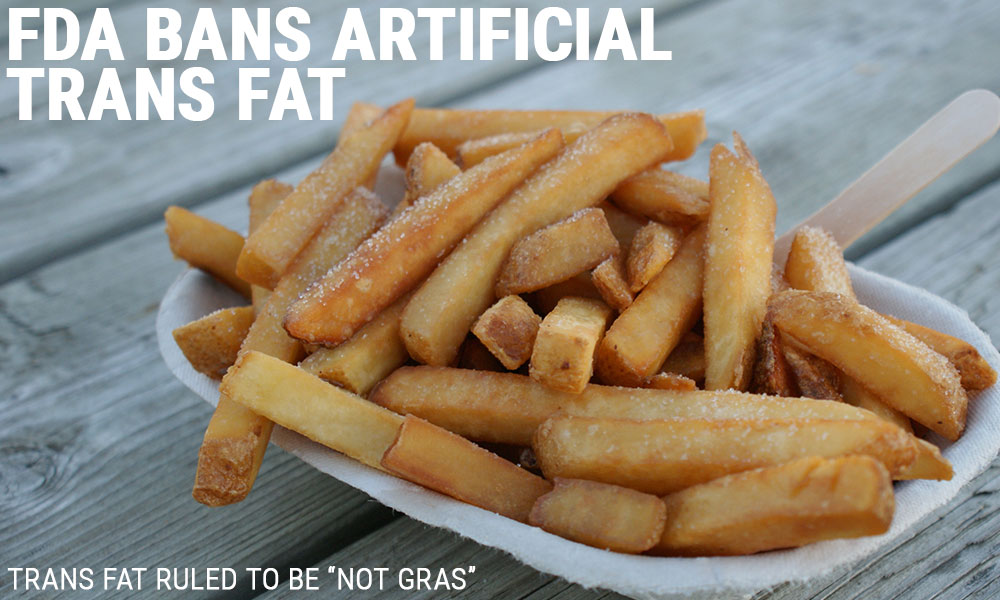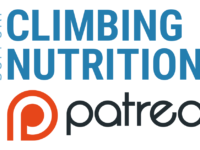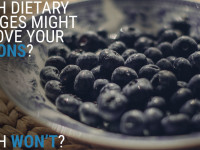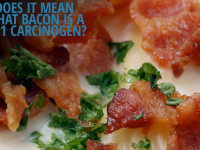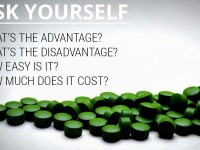The FDA has ruled that trans fats are not GRAS, or “generally recognized as safe”. Within three years, food manufacturers will need to remove all partially hydrogenated oils from their products.
In many ways, this is not a surprising move. We’ve known for a long time that artificial trans fats are terrible for the body, and for almost a decade food manufacturers have had to label the trans fat content of their products. Most people already know to avoid trans fat, and actively try to.
The major difference now is that those manufacturers will no longer be able to “sneak” trans fat into their foods through loopholes like the “< 0.5 grams/serving” gap, where a product could claim to have “0 grams trans fat” as long as it had less than half a gram per serving. Serving sizes can be manipulated though, and these products could still contribute significant amounts of trans fat through deceitful labeling.
Now, when a label reads “0 grams trans fat”, you can believe it.
Why Is Trans Fat Bad?
Why all this fuss about trans fats? You probably have a basic understanding, but let me fill in a few more gaps:
Different fats (e.g., saturated fats like myristic acid or stearic acid, polyunsaturated fats like omega-6s or omega-3s, monounsaturated fats, etc.) affect our “good” HDL cholesterol and “bad” LDL cholesterol in different ways. Most fats are neutral and increase both HDL and LDL cholesterol amounts similar enough to mostly keep the HDL to total cholesterol ratio the same.***There are notable exceptions, such as the medium-long-chain saturated fats in coconut oil that dramatically increase HDL with only a mild effect on LDL, and in general there is a lot of research to determine the best way to improve cholesterol levels with diet (including dietary fats) in people at risk for cardiovascular disease. More and more, though, we are reaching a consensus that no single dietary fat can either be called savior or demon when included in appropriate amounts in the diet—except for trans fat, of course!
Trans fats have literally the worst effect possible, though: they raise LDL cholesterol and lower HDL cholesterol, thus decreasing the ratio of HDL to total cholesterol. Depending on how much trans fat is consumed, this can dramatically increase cardiovascular disease risk.
What About Natural Trans Fat?
Natural trans fats, such as those found in dairy products (like trans-vaccenic acid or conjugated linoleic acid [CLA]), are not affected by the FDAs ruling. The FDA specifically targets “partially hydrogenated oils”—which are only produced industrially—and thus products that naturally contain trans fat like dairy will not be required to label it.
There is also no reason to require them to. No naturally produced food has enough trans fat to cause an issue.
That being said, “natural” trans fats in large amounts—such as from “fat-burning” CLA supplements—can increase cardiovascular disease risk. The science is also pretty clear that CLA is mostly useless for weight loss in humans, with inconsistent trials and at best mild results, so do yourself a favor and don’t use them.
So Long Trans Fat, and Thanks For Nothing
There isn’t much else to be said. Trans fat is gone, and pie crust enthusiasts everywhere should rejoice—or maybe not. It’s true that trans fat is the biggest “villain” here, but palm oil—the most common replacement—is still not exactly a great fat.
Sure, it’s no trans fat, but it’s still one of the only dietary fats that increases the ratio of HDL to total cholesterol. It’s a much smaller effect, but a potentially negative effect (especially in the larger amounts it’ll be used in) nonetheless.
So the same old advice still applies: eat more whole foods and fewer processed foods. The food manufacturers haven’t suddenly become interested in your health, they’re just shifting to the next cheapest ingredient that fulfills their needs—and surprise, it’s not particularly nutritious!
